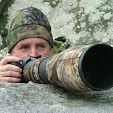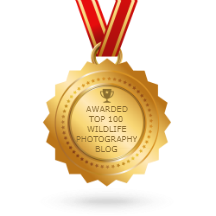 |
St.George's island Looe
|
 |
Welcome to the Cornwall Wildlife Trust reserve.
|
This weekend's weather was so typically "Cornish" for June, gorgeous hot sunny day with light breezes on the south coast at Looe island followed by a Sunday with strong North easterly winds and heavy rain on our boat survey out of Newquay.
Both surveys were done in liaison with the Cornwall Seal Group Research Trust, Looe Marine Conservation Group, Newquay Marine Group and the Cornwall Wildlife Trust. I have been a volunteer for these groups for the best part of ten years and love every minute of being involved.
For me it allows me to follow my passion for watching & photographing wildlife and then being able to use those photographs to create some strong data which enables others to identify and record individual seals and sometimes birds that have been ringed or tagged.
Saturday 26th June.
A full day on Looe island usually starts with a short hop from West Looe across to the island with boatman Dave Butters and then a welcoming committee of John & Claire at the new island jetty. It was also great to see the young volunteers who have been on the island for several weeks now and I'm sure they're learning valuable skills whilst there.
We saw 9 seals between us although there was a possibility of a tenth but the jury's out on that one!
However there were lots of birds, including many young ones, especially gulls, great black-backed & herring gulls.
 |
Grey Seal
|
 |
| Grey Seal |
 |
3 seals hauled out on Looe island
|
 |
2 seals hauled on Looe island
|
 |
Herring Gull chick
|
 |
Adult Oystercatcher
|
 |
Great Black-backed Gull
|
 |
Little Egret
|
 |
| Little Egret |
 |
| Great Black-backed Gull |
 |
| Fulmar |
 |
Shag with single youngster
|
 |
| Great Black-backed Gull chicks |
 |
Shag portrait
|
 |
Eider ducks
|
 |
Little Egret
|
 |
Oystercatcher pair with central juvenile
|
 |
Juvenile Oystercatcher
|
 |
| Herring Gull chick |
 |
| Great Black-backed Gull |
 |
Great Black-backed Gull chicks
|
Sunday 27th June.
We arrived at Newquay harbour just before 10 am for what was going to be a late start for our 3 monthly STAPIP survey with CSGRT aboard Atlantic Diver.
One look at the sea and backed up by the online weather forecast and we were all just waiting for the call to say that the survey had been postponed due to the weather.
Not to be! Our skipper Chris Lowe assured us it was going to be fine as the North Easterly was blowing off the land & over our heads, tide was right & swell was good so at 10:45 we left the harbour with more than a little trepidation.
We tootled off up the coast in a Northerly direction and only spotted 1 seal between Newquay & Trevose Head which is the farthest point we survey on this the central section of our 3 part survey which takes in all the North coast from west of St.Ives to just north of Boscastle.
There were lots of birds around with a big number of Gulls & Gannets
feasting on a shoal of fish and large numbers of Manx Shearwaters oddly
flying in both directions... we normally only see them heading
south-west!
 |
Herring Gulls & Gannets
|
 |
| Herring Gulls |
 |
Herring Gulls
|
 |
Diving Gannet
|
It was mid tide and rather "lumpy" between the headland & the islands and unusually there were no seals spotted hauled or in the water.
So it was a straight line trip from there to the West Pentire where there were a few seals, 7 in total there I think.
By now the weather had started to close in with heavy rain and poor visibility. Add that to a 30 mph wind it wasn't conducive to a comfortable day out!
Most of the time my camera gear was tucked up in the cabin as I couldn't risk a big wave flooding the camera with salt water.
So not many seals and hence not many seal photos!
 |
Seals hauled at low tide
|
 |
Guillemots and a few Razorbills
|

































%20(1).JPG)












































